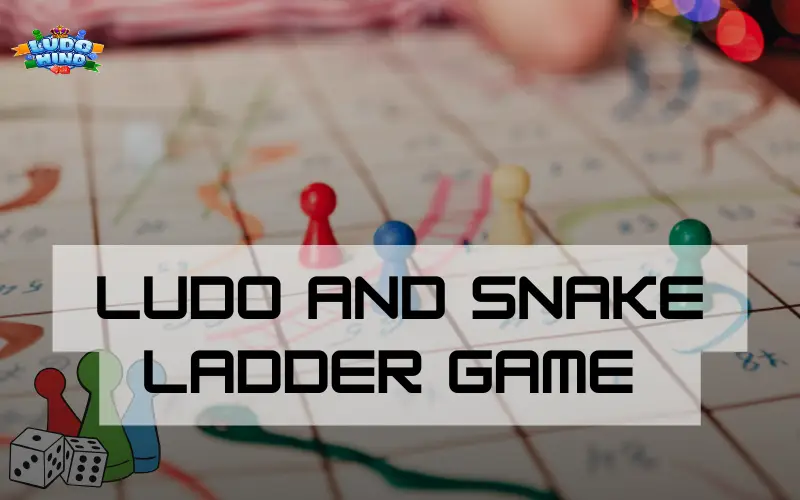Ludo and Snake Ladder Game are two of the most beloved board games that have stood the test of time, captivating players of all ages across the globe. These games are not only a source of entertainment but also a way to foster social interaction, ludo in hindi strategic thinking, and a sense of competition. In this article, we will explore the origins, rules, strategies, and the excitement that both Ludo and Snakes and Ladders bring to the gaming table.
The Origins of Ludo and Snake Ladder Game
Ludo and Snake Ladder Game has its roots in the ancient Indian game of Pachisi, which dates back to the 6th century. The game was played by royalty and has evolved over the years into the Ludo and Snake Ladder Game we know today. The name “Ludo” is derived from the Latin word “ludus,” meaning “game.” The modern version of Ludo was patented in England in 1896 and has since become a staple in households around the world.
How to Play Ludo and Snake Ladder Game
Ludo and Snake Ladder Game is typically played by 2 to 4 players, each with four tokens of a specific color. The objective is to be the first player to move all four tokens from the starting area to the home area. Here’s a step-by-step guide on how to play Ludo and Snake Ladder Game:
- Setup: Each player places their tokens in their respective starting area. Players take turns rolling a single die.
- Rolling the Die: A player must roll a six to move a token out of the starting area onto the board. If a player rolls a six, they can either move a token or roll again.
- Movement: Players move their tokens along the designated path based on the number rolled. If a player lands on a space occupied by an opponent’s token, the opponent’s token is sent back to the starting area.
- Safe Spaces: Certain spaces on the board are marked as safe spaces, where tokens cannot be captured.
- Winning the Game: The first player to successfully move all four tokens into the home area wins the game.
The Origins of Snakes and Ladders
Snakes and Ladders has a rich history that dates back to ancient India as well, where it was known as “Moksha Patam.” The game was originally created to teach moral lessons about virtue and vice, with ladders representing good deeds and snakes symbolizing bad actions. The game made its way to England in the 19th century, where it was adapted into the version we know today.
How to Play Snakes and Ladders
Snakes and Ladders is a simple yet exciting game that can be played by 2 or more players. The objective is to reach the last square on the board before the other players. Here’s how to play:
- Setup: Players place their tokens on the starting square (usually square 1). The board features a grid of numbered squares, with snakes and ladders illustrated on it.
- Rolling the Die: Players take turns rolling a die to determine how many spaces they can move their token.
- Climbing Ladders: If a player lands on a square with the base of a ladder, they can climb up to the square at the top of the ladder, advancing their position.
- Sliding Down Snakes: If a player lands on a square with the head of a snake, they must slide down to the square at the tail of the snake, which can set them back in the game.
- Winning the Game: The first player to reach the final square (usually square 100) wins the game. Players must land exactly on the last square to win; if they roll a number that would take them past it, they must remain in their current position.
The Excitement of Ludo and Snakes and Ladders

Social Interaction
Both Ludo and Snakes and Ladders are designed to be played with friends and family, making them perfect for social gatherings. The games encourage interaction, laughter, and friendly competition, creating memorable moments that players cherish.
Strategic Thinking
While Ludo and Snake Ladder Games are primarily games of chance, they also require a degree of strategy. Players must decide when to move their tokens, when to block opponents, and how to take advantage of ladders or avoid snakes. This strategic element adds depth to the gameplay, making it more engaging.
Accessibility
One of the most appealing aspects of Ludo and Snake Ladder Game is their accessibility. The rules are simple enough for children to understand, yet they can be enjoyed by adults as well. This makes them ideal for family game nights, parties, and casual gatherings.
Variations and Digital Versions
Both games have inspired numerous variations and adaptations. From themed boards to digital versions available on mobile devices, players can enjoy Ludo and Snake Ladder Game in various formats. These adaptations often introduce new rules or challenges, keeping the gameplay fresh and exciting. Online platforms allow players to connect with friends or compete against others worldwide, enhancing the gaming experience.
Tips for Winning at Ludo and Snake Ladder Game
- Prioritize Getting All Tokens Out: Focus on getting all your tokens onto the board as quickly as possible. This increases your chances of moving them around the board and reaching home.
- Use Safe Spaces Wisely: Utilize safe spaces to protect your tokens from being sent back to the start. Positioning your tokens on these spaces can provide a strategic advantage.
- Block Opponents: If you have the opportunity, land on spaces occupied by your opponents to send them back. This can slow down their progress and give you a better chance of winning.
- Balance Risk and Reward: While it’s tempting to move quickly, sometimes it’s better to play it safe and wait for a better roll. Assess the board and your opponents’ positions before making a move.
Tips for Winning at Snakes and Ladders
- Take Advantage of Ladders: Always aim for squares that have ladders. Climbing a ladder can significantly shorten your path to victory.
- Be Cautious of Snakes: While you can’t control where you land, try to avoid squares that lead to snakes. If you have a choice, opt for paths that minimize the risk of sliding down.
- Stay Positive: Snakes and Ladders is a game of chance, so maintain a positive attitude regardless of setbacks. Enjoy the game for its fun and unpredictability.
- Play with Strategy: Although the game is largely based on luck, being aware of the board layout can help you make better decisions about your moves.
Conclusion
Ludo and Snake Ladder Game are more than just games; they are a celebration of fun, strategy, and social interaction. Their rich histories and simple yet engaging gameplay make them timeless classics that continue to bring joy to players of all ages. Whether you’re playing with family at home or challenging friends online, the excitement of these games is undeniable. So gather your loved ones, roll the dice, and embark on a thrilling journey filled with laughter and competition. Discover the excitement of Ludo and Snakes and Ladders today, and create lasting memories with every game played.






